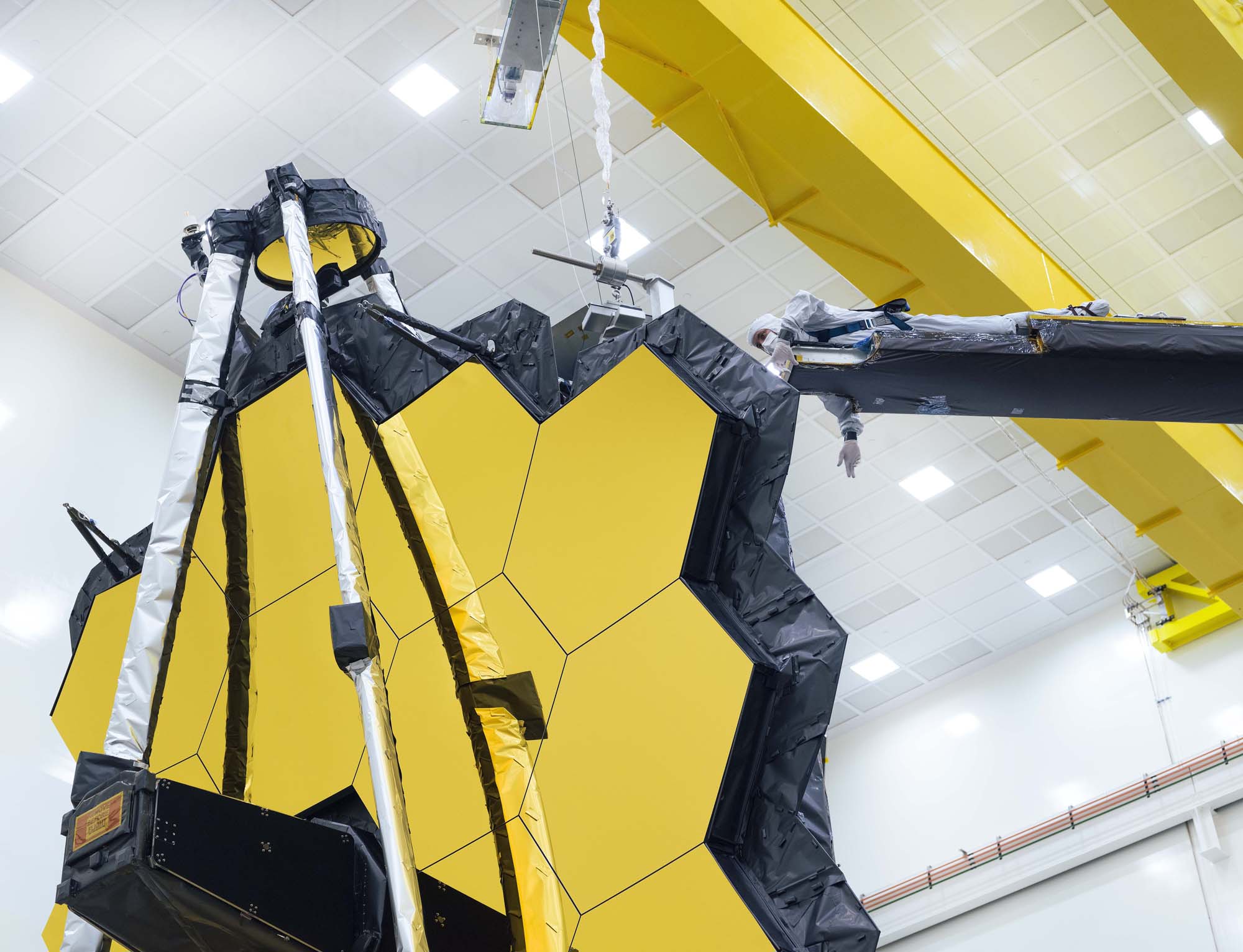NASA's James Webb Space Telescope unfolds its giant mirror for last time ahead of Oct. 31 launch
NASA's James Webb Space Telescope has unfurled its big golden mirror for the final time on Earth ahead of its planned launch later this year.
The $9.8 billion Webb, which is billed as the successor to NASA's iconic Hubble Space Telescope, opened its 21.3-foot-wide (6.5 meters) primary mirror recently during a test at the Los Angeles-area facilities of its main builder, the aerospace giant Northrop Grumman.
The mirror, which is composed of 18 hexagonal segments, is too wide to fit inside the payload fairing of any currently operational rocket, so it will launch in a compact configuration and deploy after reaching space. The ongoing test is the last major trial for the mirror system, and its completion will mark a big milestone on the path to launch, mission team members said.
Video: See Webb's gold-coated primary mirror in 'beauty shots'
Related: Building the James Webb Space Telescope (photos)
"This is not just the final deployment test sequence that the team has pulled off to prepare Webb for a life in space, but it means when we finish that the primary mirror will be locked in place for launch," Lee Feinberg, optical telescope element manager for Webb at NASA's Goddard Space Flight Center in Greenbelt, Maryland, said in a statement.
"It’s humbling to think about the hundreds of dedicated people across the entire country who worked so hard to design and build the primary mirror, and now to know launch is so close," Feinberg added.
Webb is scheduled to lift off atop an Arianespace Ariane 5 rocket on Oct. 31 from Kourou, French Guiana. The huge telescope will make its way to the Earth-sun Lagrange Point 2, a gravitationally stable spot in space about 930,000 miles (1.5 million kilometers) from its home planet.
Breaking space news, the latest updates on rocket launches, skywatching events and more!
Webb is designed to observe the cosmos in infrared light. Such work requires the telescope and its scientific instruments to remain quite cool, so Webb sports another big deployable in addition to its primary mirror — a sunshade the size of a tennis court.
The 13,670-lb. (6,200 kilograms) scope will be in high demand once it's up and running. For example, astronomers will use Webb to hunt for signs of life in the atmospheres of nearby alien planets and study the first stars and galaxies that ever formed in the universe, among other tasks.
"Webb is going to study all phases of cosmic history, and many different types of phenomena," Eric Smith, James Webb Space Telescope program scientist at NASA headquarters in Washington, D.C., said during a news conference today (May 11).
"The discovery capability of Webb is limited only by our own imaginations, and scientists around the world will soon be using this general-purpose observatory to take us places we haven't dreamed of going before," Smith added.
Such work was originally expected to begin much sooner, however, and at a significantly lower cost. Since 2009, the estimated price tag of the Webb mission has nearly doubled, and the targeted launch date has been delayed by about seven years.
Mike Wall is the author of "Out There" (Grand Central Publishing, 2018; illustrated by Karl Tate), a book about the search for alien life. Follow him on Twitter @michaeldwall. Follow us on Twitter @Spacedotcom or Facebook.

Michael Wall is a Senior Space Writer with Space.com and joined the team in 2010. He primarily covers exoplanets, spaceflight and military space, but has been known to dabble in the space art beat. His book about the search for alien life, "Out There," was published on Nov. 13, 2018. Before becoming a science writer, Michael worked as a herpetologist and wildlife biologist. He has a Ph.D. in evolutionary biology from the University of Sydney, Australia, a bachelor's degree from the University of Arizona, and a graduate certificate in science writing from the University of California, Santa Cruz. To find out what his latest project is, you can follow Michael on Twitter.

